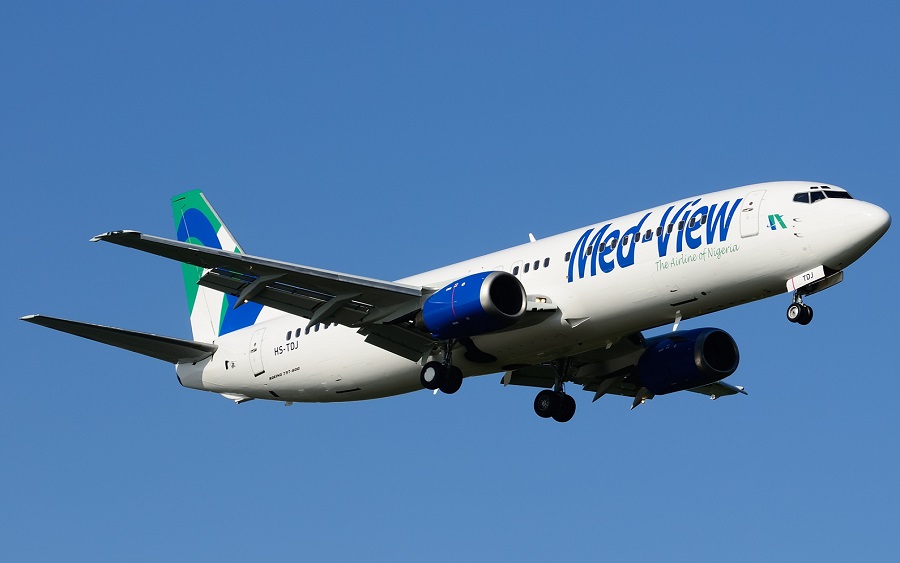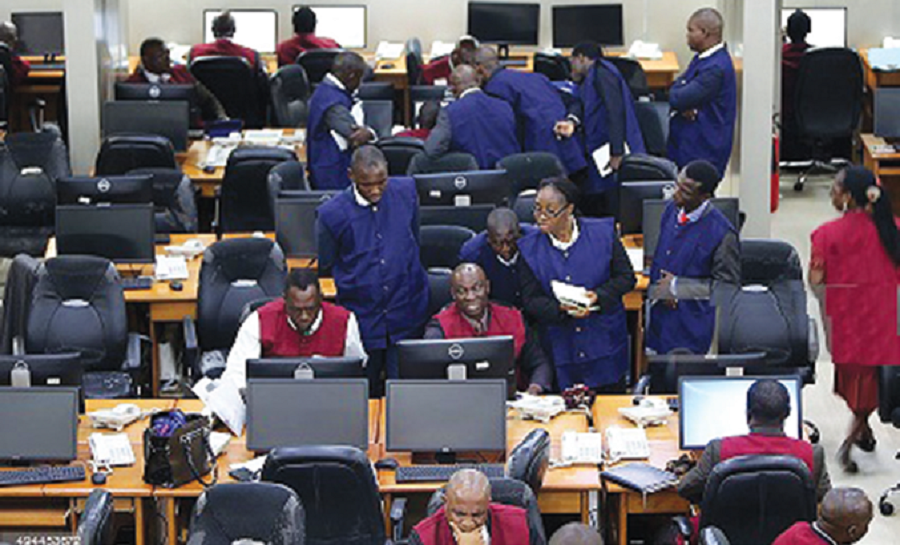When Med-View commenced domestic operations in November 2012, it did so amidst fanfare, with a fleet of two Boeing 737-400 aircraft and one Boeing 737-800, which was acquired a month later. Little did the management of the indigenous airline know that providence had other plans for its future.
Two years later, the airline acquired another Boeing 737-400 Classic aircraft with a capacity for 150 passengers in business and economy classes. In January 2017, the board of what used to be one of Nigeria’s fastest-growing flag carriers listed the shares on the floor of the Nigerian Stock Exchange and is the only airline presently listed on the local bourse.
18 months later, Med-View airline decided to spread its tentacles beyond the shores of Nigeria with the Dubai route. This feat made the airline the first Nigerian carrier with high passenger traffic on the international route, as it airlifted 72,175 passengers.

Downturn
The fortune of the company started dwindling in 2017 when its flight from Lagos to London was disrupted, leaving its passengers stranded at the Murtala Muhammed International Airport, Lagos.
According to the airline, the embarrassment was attributed to operational reasons. The airline, in a statement signed by its media consultant, Mr Obuke Oyibhota, assured the passengers that efforts were being intensified to airlift them to their destination the next day.
Oyibhota stated, “We are deeply sorry for all the inconveniences suffered by the affected passengers and everything possible within Standards and Recommended Practices (SARPs) in aviation is being done to airlift them. Med-view Airline will not abandon its obligations to passengers, noting that safety comes first in all its operations.”
While some of its passengers decided to renew their faith in the services of the airline, others took to their heels. But the hopes of the former got dashed between December 22 and 27, 2017 in the United Kingdom when Med-View’s fully boarded 8777 aircraft made an Air Return to London Gatwick for safety reasons, which called for serviceability checks and certification lasting 72 hours.
Despite that fact it deployed two aircraft as relief flights, the holiday season compounded the backlog of passengers, which stretched to December 27th. The development also affected passengers on the Lagos/Abuja/Dubai route.
[READ ALSO: Medview Airline in financial trouble as Airpeace, Private Jets seize market share]
Final strike
In April 2018, Med-View Airlines suspended all international operations while also reducing regional routes on its flight schedule to just two cities. The airline, which once had about six aircraft in its fleet, suspended flight operations to Gatwick, London, Jeddah in Saudi Arabia and Dubai in the United Arab Emirates.
Med-View’s Defense
The airline blamed what it described as a temporary suspension of its international operations on bad leasing arrangement for two operating aircrafts servicing the London, Dubai and West Coast routes.
Chief Executive Officer of the airline, Muneer Bankole, explained that the leased Boeing 777 aircraft developed faults and failure of the lessor to avail an alternative aircraft as agreed, affected the operations.
According to him, the airline had not left the international operation because it could not meet its financial obligations on the international front but for operational difficulties which they had learnt from to emerge better.
He said, “We have four airplanes and we own all of them. The best way to survive in this industry is to own your asset. Our own B737-500 (Abeke) is going through a C-check and reconfiguration from 221 to 242 (passengers). Before, we had 30 business-class and 191 seats in the economy. By the time it returns, it will be in three cabins with world-class onboard facilities.”
The Med-View boss argued that contrary to claims in some quarters that the company is exposed to high debt profile, the airline is healthy.
Where Med-View stands in NSE
The value of the shares on the floor of the NSE has not moved below or above N1.80 in the last two years. As at October 22, 2019, data obtained from the local bourse disclosed that the company recorded 0 trade and 0 volume within the period under review.
Also, the airline has been among companies listed on the NSE’s Free Float Deficiencies for some months now.

What it means
Companies listed on the Exchange are required to maintain a minimum free float for the set standards under which they are listed, in order to ensure that there is an orderly and liquid market for their securities. The free float requirement for companies on Main Board, where Med-View belongs, is a minimum of 20% of the issued and fully paid-up shares.
An X-Compliance report, which was released on October 18, 2019, disclosed that the company had applied for waivers from the Regulation Committee of the National Council of The Exchange (RegCom). After approval, the company is expected to provide quarterly disclosure reports to the Exchange which it has not done for months.
Its Financials
Last April, the airline released its audited results for the 2018 financial year. Its revenue fell sharply from N36.9 billion in 2017 to N9. 5 billion in 2018. This marks a 74% decline year on year (y-o-y).
Even more worrisome is the fact that the firm made a mega loss in 2018. The company made an N10.3 billion loss after tax in 2018, as against an N1.2 billion profit after tax in 2017. This represents a 925% decline year on year.
Also, its shareholders’ fund dropped from N7.38 billion in 2017 to a loss of N3.26 billion in 2018. Its Basic Earnings per share also dropped to a loss from N12.87 to –N106.22 within the same period.
Why the loss?
Management of the firm shed more light on the factors that led to its woeful performance. Chairman of the airline, Sheik Abdul-Mosheen Al-Thunayan, blamed the performance on political tension and tight liquidity.
He said, “The political tension and extremely tight market liquidity in Nigeria affected the economic growth of Med-View. The depleted aircraft fleet, due to C-Check at the early part of 2018 and reprotection exercise, also contributed to the decline in the revenue of the Company.”
The reprotection exercise pertains to its London route. Al-Thunanyan also disclosed that the firm had encountered mixed fortunes on its London route.

Import on airline
Having been aware of these challenges and in a bid to stay afloat, Med-View Airline decided to downgrade the staff strength of the company.
[READ ALSO: Nigeria mulls aircraft leasing company as national carrier gets underway]
Going forward
The airline sector in Nigeria is increasingly becoming highly competitive, with an interesting twist of surpassing one another by the major players. The Airline’s new competitors are not necessarily registered airlines, but rather charter services by individual and corporate entities who have an interest in aviation.
There are chances of a likely acquisition or take-over by new entrants or foreign investors, which would be ready to do business differently, whether the Bankole led-administration likes it or not because potential passengers are no longer waiting for airline offers to travel around the world; various groups and organizations are putting up irresistible packages for passengers and bringing them to fly with registered airlines. This, in turn, is splitting the revenue to be generated by the airlines in scheduled operations.























